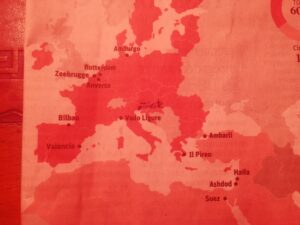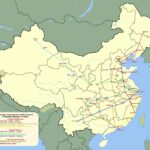OBOR, One Belt One Road, is now renamed BRI, Belt Road Initiative, for a better explanation to Western world, but it remains THE PLAN which our and next generations will refer to as a corner stone in world development. After the second world war Europe remembers the Marshall plan, to rebuild countries and their infrastructures and to make people work and survive. It was in present value a 100 billions $ investment, BRI is a 1400 billions $ investment, more diluted on Eurasia territory, but in any case inspired by a long term vision, unusual in European politics, and an enormous driver of a new future in the China interest but also in the interest of all populations involved.
The Chinese regime so long criticised from a western democracy point of view, gives a chance of stability and development to the largest part of the world, with its possibility and capability of twenty years planning, which should be the way of serious approach to the world enormous problems , from famine to pollution, from food waste to climate change, from demography to energy and water. The objectives of Beijing are those of all the classical empires, like Rome or Persia of the ancient times, assure accessibility of their export through old Central Asia infrastructures to Europe and USA markets in full security and at maximum speed, reducing times and cost of world logistics.
So no doubt about, but the weak and cold acceptance of Europe to this revolutionary plan reveals all the impotence of this economic area, politically not united and with logistic myopia, certified by the ridiculous and obsolete TEN program, by the way in enormous delay of realisation. Furthermore it confirms another time the arrogance and colonial mentality of Northern European States toward Southern European States, clearly favoured by these new infrastructures coming from East and South and from the investments of China in Israel,Turkey, Greece, Italy,Spain harbour systems, to create maritime terminals for the Belt. Road and Railways terminals will favour Russian, Poland and Central Europe States, so the Northern Rim, but the new Belt will favour the Southern Rim, if logistics connections with Northern Rim will be assured by local initiatives. And also these internal infrastructures from South to North of Europe will be done by Chinese, as I forecasted 30 years ago in front of Italian and European logistic inertia.
In the included map we can see the impressive progression of Chinese harbour investments in Mediterranean sea. Haifa and Ashdod in Israel, Ambarli in Turkey, Pireo in Greece, Vado Ligure and Trieste with its new free-zone, in Italy, Valencia in Spain, these are all in the Southern Rim of Europe. Investments go from 50 to 700 billions of different Chinese State enterprises, Port Authority or Containers operators like Cosco, already present also in Northern Atlantic Rim for the routes to USA and the new Arctic Routes.
For Italy another big opportunity of a win-win cooperation with China, probably obstaculated by Bruxelles with formal juridical and social prejudices, but with real favour to Northern Rim harbours.Italy should accept with enthusiasm the investments in logistic infrastructure which we didn’t build for our nimby mentality and economic crisis, creating a delay of thirty years in our development. The Italian opportunity is to give back to China our entrepreneurial culture in SME and our high quality artisanal type of products, utilising at most the future accessibility of Chinese market, particularly for the middle-upper class consumers very keen of Italian way of living.
The best competences in logistic should be reunited from our Universities and consulting firms, to cooperate with this long term plan, facilitating meetings, dialogs, local actions to be integrated in the large vision, and most of all preparing people and educational structures to accept this new vision, finding in it all the best possible results for our economic and industrial initiatives. In our logistic history, started in the biggest Italian groups in 1982, this is the most important and perhaps the last opportunity to upgrade our old infrastructures and particularly the harbour system, the most old of them. For our economy a relaunch of our export capability, improved in quantity, quality and value also during the long decline from 2007, but not sufficiently oriented to Asia, mostly focused on Europe and USA.



